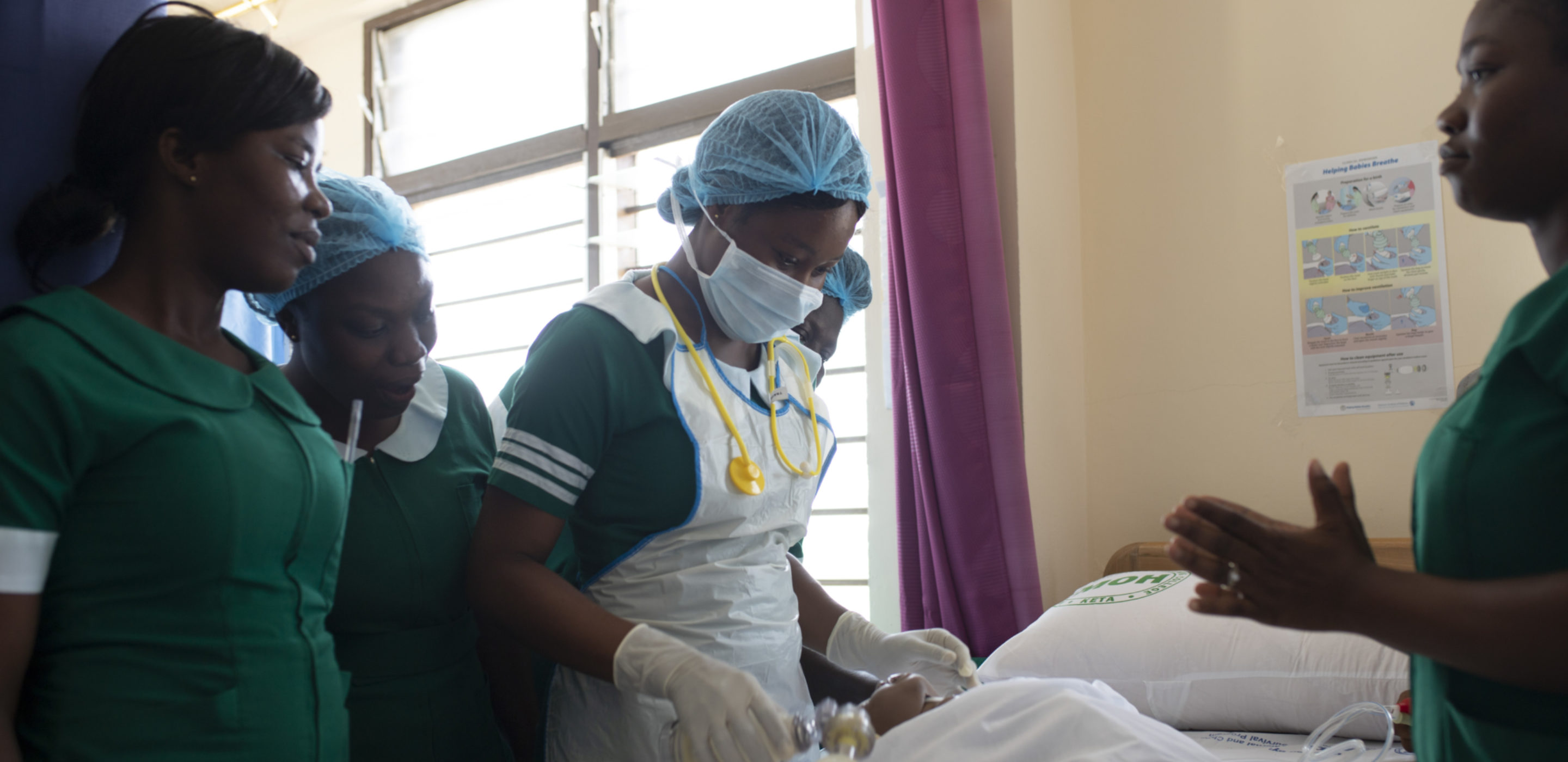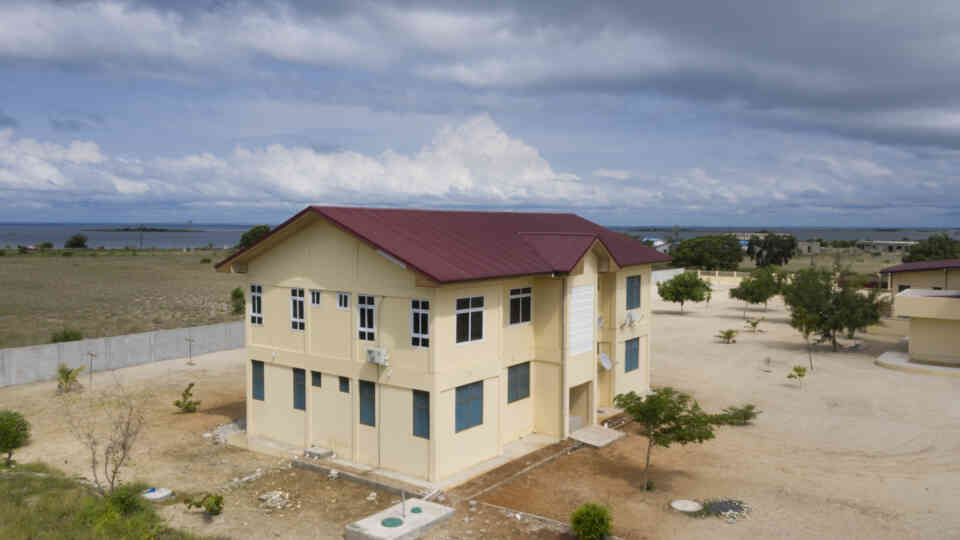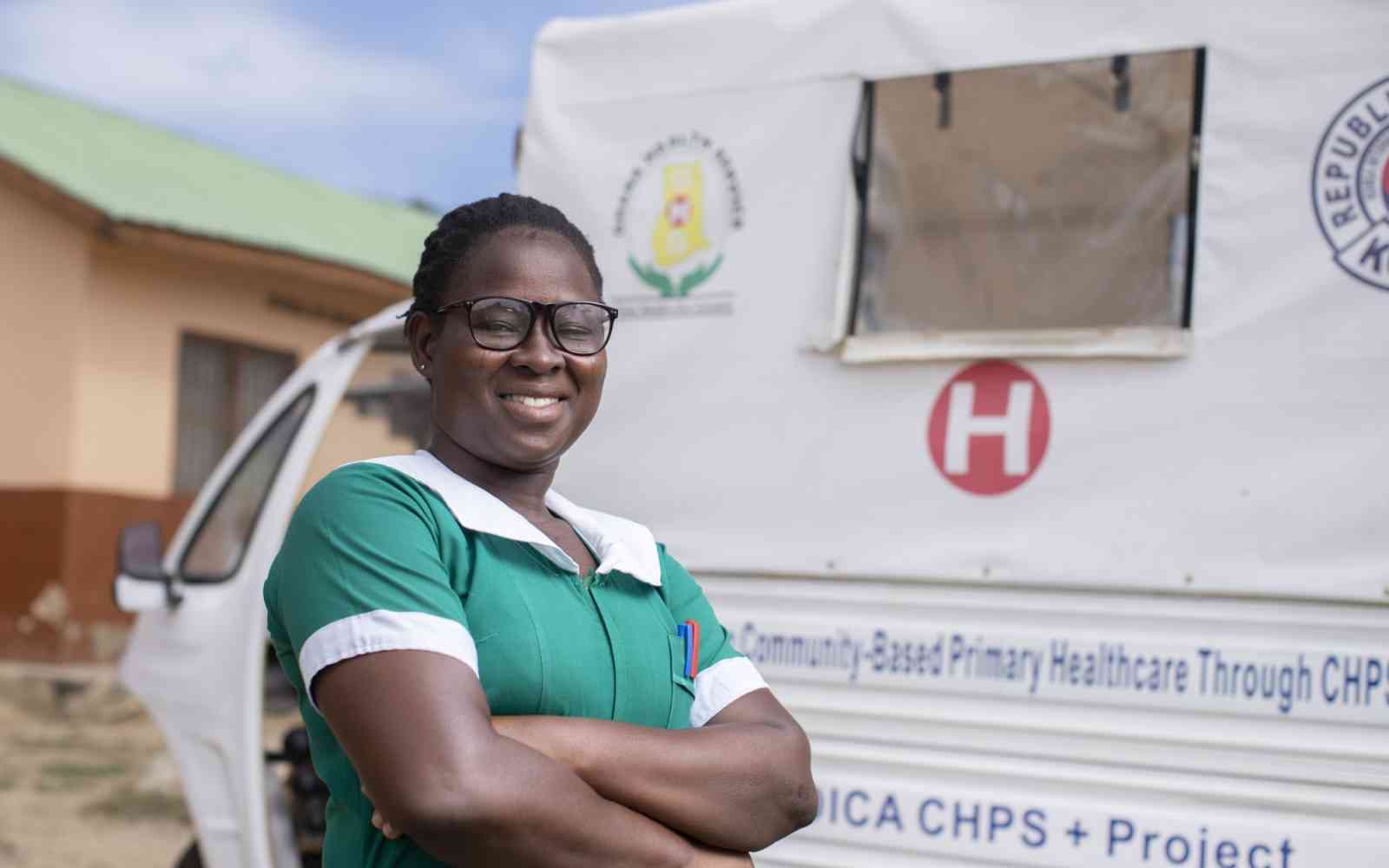The United Nations Office for Project Services (UNOPS)

Helping midwives train
Located on the eastern most side of Ghana, the Volta Region stretches from the coastal plains on the Atlantic coast to more arid lands in the north. The vast and varied landscape known for its rolling hills, lagoons, lakes and forested areas can also make accessing health services a challenge, especially in the more remote and hard to reach parts of Volta.
Accessing maternal and child healthcare is a particular problem. Further, with less than two nurses or midwives per 1,000 people across the country it is a challenge to find enough trained professionals willing to work in these more difficult environments.
Volta Region
The over two million people who call the Volta Region home are served by 326 health institutes. However, for many, hospitals are still located far away from their homes, separated by rough land. Travelling this terrain while in labour can be a difficult journey for many women to make. Even when they arrive at hospital, it is not certain that they will see a midwife.
Head of Registered Midwives, Katherine Adigbleku, recalls her experience only a decade ago in the Keta Hospital, one of the main health facilities in Volta: “Our midwifery staff situation in the hospital was very poor. We were understaffed. There were times that we had about three midwives on duty for the whole day. One in the morning, one in the afternoon, one in the night. So you can just imagine we couldn't even give the basic care to our patients when they come for us to give basic care.
“It was very difficult because imagine having so many patients on the ward and you being alone. Who are you going to attend to first? Some [patients] were being neglected because we had to concentrate on the more serious cases. So we were crying for more staff to be posted to hospital,” she said.
With the low number of trained nurses and midwives across the country, the situation Katherine witnessed represents a more widespread problem in Ghana – one with a high cost to women and children’s lives.
“In 2016, in the Volta Region, the maternal mortality rate was 175 per 100,000 live births [...] We need more midwives to take care of pregnant women for safe delivery, to reduce the maternal mortality rates,” says Rejoice A Ahetoh, who works closely with midwives-in-training.
In order to address some of these issues and as part of a wider national effort, a new midwifery training college in the Keta municipality was developed. The college serves health facilities in the southern Volta Region and helps improve the safety, effectiveness and efficiency of maternal and child care as well as women-centred care more generally.

The facility includes an administration block, lecture halls complete with washrooms, an auditorium, two-bedroom apartments to accommodate the tutors, a library, and accessibility features like ramps and walkways.
The college has been fully equipped with a range of furniture, ICT and medical equipment. Supporting work was completed on reclaimed land bordering one of the largest lagoons on the continent, which saw the completion of a water tower network, power facilities and landscaping.
We have all the things that we need as student midwives to improve upon our learning skills as a midwife. They have also been able to provide us with a skills lab [...] which students are able to use to practice and get more knowledge and skills about their profession. Our profession is in such a way that the more you practice the more you get the experience.
Today, several hundred students like Ketevi attend the college, which is seen as a valuable addition to the health facilities in the region.




About these projects
The Korea International Cooperation Agency (KOICA) partnered with UNOPS to construct and equip the college in the Volta Region as well as for the procurement and distribution of equipment in both the Volta and Upper East Regions of Ghana.
“We are committed to seeing Ghana make progress towards achieving SDG3 and believe in acting quickly with partners like UNOPS who can implement projects such as these efficiently,” says KOICA Ghana Country Director, Yukyum Kim.
“KOICA chose UNOPS as a partner to implement the construction and procurement of medical and non-medical equipment in order to ensure the quality of the project, using UNOPS expertise in project management,” he said.
“UNOPS was in charge of procuring the equipment for the KOICA project. We received high quality equipment that has improved the services that we do [...] We wish that this collaboration continues,” said Bolgatanga Municipal Director of Health Services, Edmund Mohammed Nyanwuru Nellic.
The two projects took an inclusive approach, ensuring work met the unique needs of a wide range of people, are gender sensitive and encourage access by both women and men. Further, they supported livelihoods through the contracting of local workers, firms and suppliers whenever possible. Community perspectives were encouraged at every stage of the planning and implementation process of both projects to ensure local ownership.














